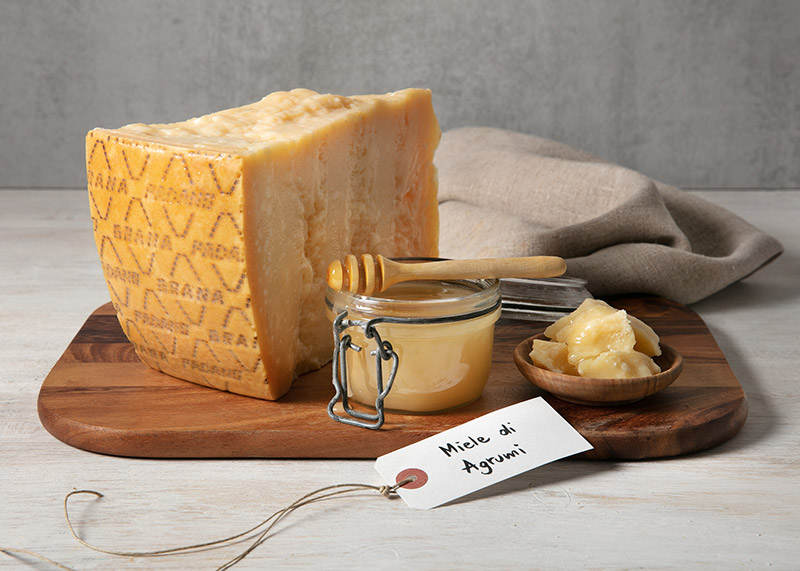
Citrus honey

Citrus honey is made across mainland Italy and the islands.
The various citrus plants (orange, lemon, mandarin, bergamot, lime, grapefruit, etc.) are evergreen trees producing intensely fragrant flowers at various times of the year, according to the species, and they generate fruit called hesperidium. Citrus is originally from China and all the citrus trees growing in Italy are cultivated to fruit, with honey production taking place in April and May when most of these are flowering. Citrus groves can be found almost all over the world such as India, Argentina, Brazil, China and the Mediterranean countries. Whilst citrus is grown in mainland Italy, including on Lake Garda, citrus honey is never made in these areas due to the climate and the limited crops present, which produce insufficient nectar quantities.”
Characteristics:
– Colour: very pale, ranging from almost colourless to straw yellow in liquid form and white to ivory when crystallised.
– Fragrance: delicate, subtly floral of zagara, orange flower water, white flowers, osmanthus.
– Aroma and flavour: delicate with aromatic properties juxtaposing the honey’s normally sweet scent.
– This is an original, yet delicate pairing which is accessible for lovers of new flavours. The delicate floral aromas of citrus honey are balanced by the butter and hay notes of this young Grana Padano, in a pleasant sweet-savoury balance.
Serving method:
We always recommend serving an assortment of honeys, perhaps two very different ones, so leaving diners to decide for themselves. Honeys should not be put onto cheese prior to serving because this does not leave the choice to diners but also because the high osmotic pressure of honey tends to lead to it absorbing the cheese’s salty liquids in the space of just a few minutes. Try the two on their own first before testing the various pairings.
The honeys should be served in small containers, and a teaspoon for serving it. Liquid and creamy honeys can be used as they are. Compact crystallised honeys can be stirred before transferring the honey from the jar to the serving container to make them easier to serve, scraping off the required quantity.
Curious facts
It is easy to source both locally and at large-scale retailers.
Honey’s characteristic fragrance is the result of a single molecule, methyl anthranilate, found in varying volumes in the various production areas.
Lemon honey, zagara honey, orange honey, mandarin honey: these are just some of the retail names under which citrus honey is sold. It is the ultimate confectioner’s honey. It is also ideal for herb teas, with fruit, or in a salad vinaigrette.
